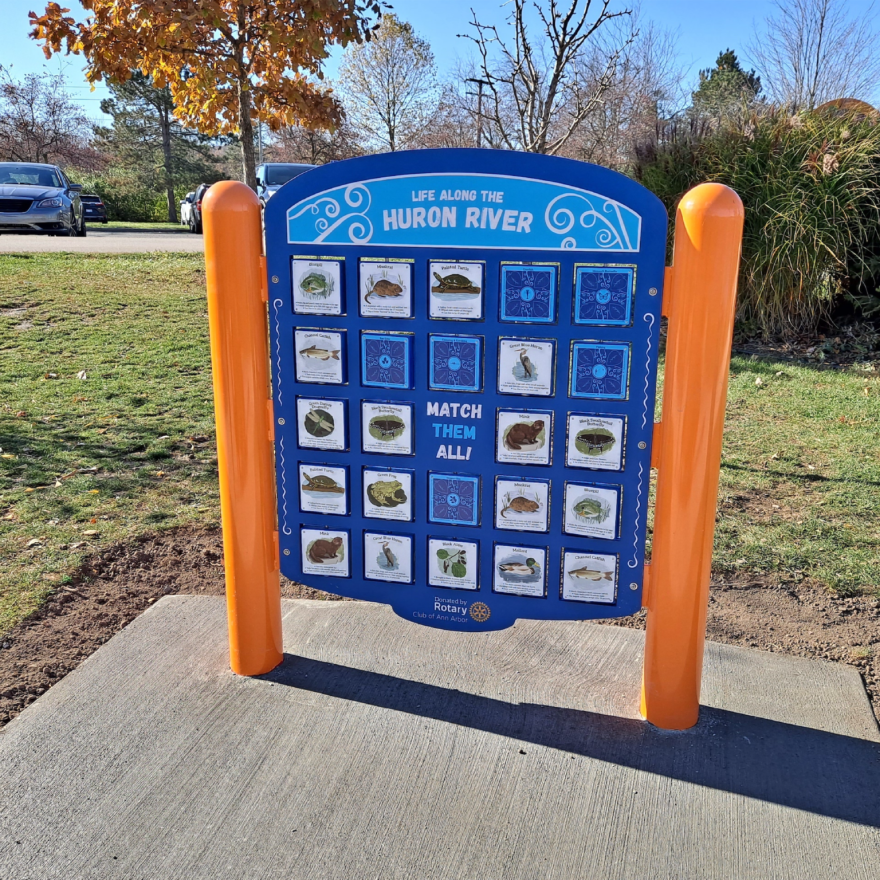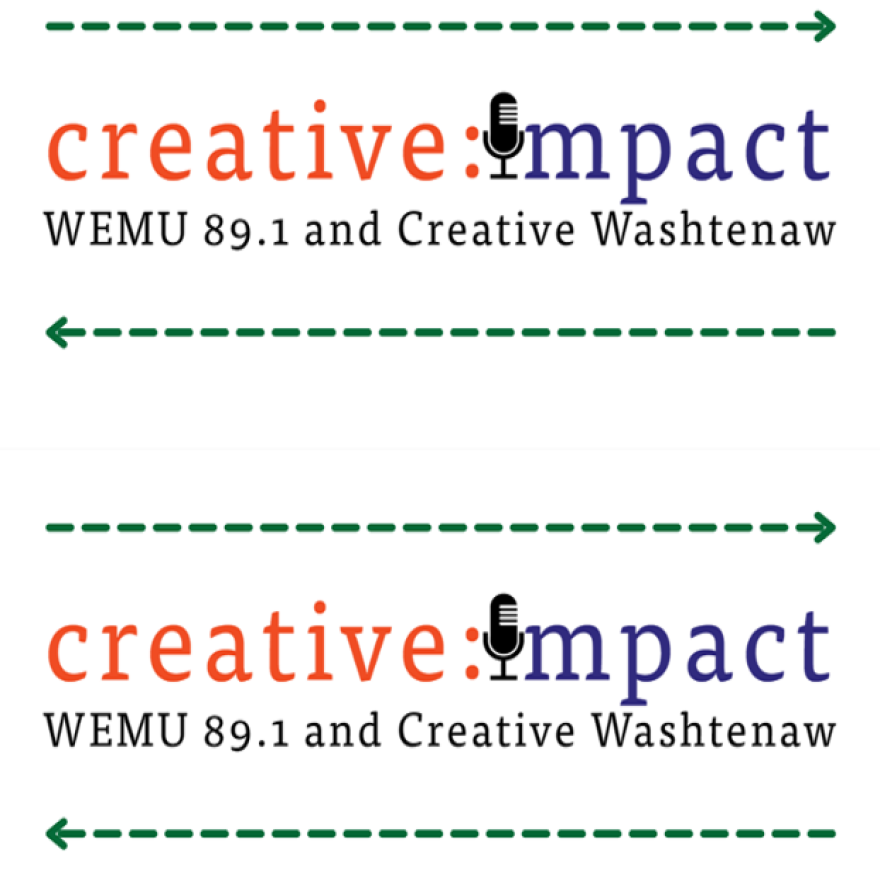Creative industries in Washtenaw County add hundreds of millions of dollars to the local economy. In the weeks and months to come, host Deb Polich, the President and CEO of Creative Washtenaw, explores the myriad of contributors that make up the creative sector in Washtenaw County.

ABOUT JASON JAY STEVENS:

Jason Jay Stevens is the principal and chief designer at Flutter & Wow Museum Projects. With a background including stints at science and art museums, furniture workshops, and specialty fabrication firms, he founded Flutter & Wow in 2006 to take on complex design challenges and to indulge in his love for conceptual planning and visitor engagement. He has taught courses in exhibit and environmental design at the University of Michigan and Lawrence Technological University, and has written about the history and practice of exhibit design. He is a past Board member of the National Association for Museum Exhibition. He and his wife and daughter live in the Waterhill neighborhood of Ann Arbor.
RESOURCES:
TRANSCRIPTION:
Deb Polich: This is 89 one WEMU. I'm Deb Polich, president and CEO of Creative Washtenaw and your host for this segment we call creative:impact. Thanks for tuning in on Tuesdays to meet the artists, the creative people, the businesses and organizations impacting Washtenaw County's quality of life, place and economy creatively. Today, we are going to explore museum and exhibition design--a subject my guest knows well. Jason Stevens is the principle behind Flutter and Wow Museum Projects, an exhibition design company he started in Ann Arbor in 2013. Jason, welcome to the show.
Jason Stevens: Thank you. Nice to be here.
Deb Polich: Yeah. I'm so looking forward to our conversation for so many reasons, but also because I know it's going to take me back to my days producing art exhibitions for Arttrain, a museum on a train. That was fun. I venture to say that though most people have gone to a museum, few really give much thought to exhibition design. What does a design company like Flutter and Wow do?
Jason Stevens: It's a funny question to ask, Deb. My own father continues to ask me that question, and he's a designer!
Deb Polich: Oh, wow!
Jason Stevens: But, you know, he's designing in the automotive field. And, as he said, it never occurred to him that somebody had to design the things at the museum.
Deb Polich: Right.
Jason Stevens: But there's a lot of design to do at the museum. And I think, nowadays as much as any time, museums have an imperative to deliver for their visitors exhibitions that are relevant and what is relevant is changing underfoot constantly and meeting the expectations of visitors. So, we're here to help not just museums, but any institution that is exhibiting, to meet their visitors and and deliver something that can be exciting and educational and engaging.

Deb Polich: So, how did you get into this work?
Jason Stevens: That's a good question. I have been a polymath my whole life. A little kid who was very geeky.
Deb Polich: Wait, wait, wait! Talking about geeky. We're talking about geeky. What's a polymath?
Jason Stevens: Polymath is somebody who's into lots of different things. You know, I have struggled always with labeling myself. College was me hunting for something that I would be content to devote my life to. And, sometimes, I say that search actually ended up cornering me. The only thing I can do now is exhibit design, because I explored so many different options. I'm not too fond of the phrase "jack of all trades, master of none," but probably because it suits me so well.
Deb Polich: Well, I hear you on that.

Jason Stevens: I came up creating a lot of artwork as a kid. Like I said, I did a lot of writing and drawing and experimenting with magnetic tape and all kinds of stuff like that. And that continued into my early adulthood. I discovered art as a possible vocation, created a lot of different kinds of artwork, generally interactive installations stuff that required also a lot of polymath--if I may use the vocabulary word again--polymath approach where, you know, I'm thinking about how these wood pieces are going to go together, but I'm also thinking about some electronics and some pushbuttons and some speakers. So, that kind of led itself to me having a skill set that helps in doing exhibit design. It also meant that I was doing a lot of work in art museums and galleries, so I became familiar with what happens behind the scenes.
Deb Polich: And you were on staff at museums, but also decided to start your own company. What prompted that?
Jason Stevens: That's a wild gene, right? People who don't have enough sense but have whatever wild gene that makes them think they should start their own company. I come from a long line of entrepreneurs. Both of my parents ran their own companies, so I joke about the genetics, but maybe there's actually a component that's true. You know, I think again, back to the polymath thing, I have this desire to do it all. I think that's a little bit of an illness because no one can do it all. But I have that compulsion. And so, it naturally led to me starting my own company, so that I could dabble in all of the aspects of it. I was never content to just be stuck as a designer. I also wanted to do the research. I wanted to do some of the writing.

Deb Polich: Well, all of those skills pull it all together. 89 one WEMU's creative:impact continues. I'm Deb Polich, and my guest is Jason Stevens, whose company Flutter and Wow Museum Projects located right here in Ann Arbor, designs exhibitions for museums all over the country. So, Jason, engaging exhibition designs brings objects and displays to life through display, storytelling, flow, education, and so much more. What are some of the skill sets and competencies among your team members? We've talked about you a bit, but tell me about your team of designers.

Jason Stevens: Oh, yeah. I have a fabulous team of super-skilled people. It blows me away. We work with a variety of artists depending on each project, but, on staff, we have a graphic designer who does all kinds of work: digital, 2D print stuff. We end up going into the third dimension because that's exhibit design. It's not so interesting when it's flat. So, there's that. We also have builders, people with a lot of experience building furniture and also building exhibits and then installation. We work with several people who are really smart about how technological components go together, and that's everything from a TV that's playing a looping video to, again, something interactive--push buttons that activate something on a computer that then does, you know, "WING DING" little things.

Deb Polich: Right, right, right. So, where do you start when you meet up with a client? How do you take their ideas and then put the "wow" into that exhibition that both meets the client's needs and is something that's really interesting and engaging to the visitor?
Jason Stevens: I like how you worked the word "wow" in there, Deb. Very appropriate.
Deb Polich: You saw that!
Jason Stevens: So, I mean, it starts with a lot of listening. Exhibition projects can be really complex, and you don't know the complexities--the particular complexities--until you get into it. But it's really important at the beginning to listen to a client and hear their hopes, dreams, fears, wishes, and not just theirs, but the people who are behind them, who are often a museum board, donors, of course, and the visitors. So, we begin with a lot of listening and trying to figure out what it is that the client already knows they want and what they don't know that they want and where we can fill in. And I'll say a lot of what we do is really service, and that service is filling in those gaps that a museum staff might not have.

Deb Polich: Sure, sure. And do you have examples of maybe when you've successfully steered a client into a direction that they weren't thinking about going?
Jason Stevens: Oh, gee! There are so many. I mean, the first one that comes to mind is the Pennyroyal Area Museum, which is down in Hopkinsville, Kentucky, halfway between Nashville and Paducah. And I joke that every history museum in America is at the crossroads of history, because it's true.
Deb Polich: Sure.

Jason Stevens: But Hopkinsville is really the crossroads of history. And so many parts of American history have flowed through that little town. And so many stories--big American stories--have little stories in Hopkinsville: everything from aliens to psychics to civil war. I mean, they're right on the battle line of the Civil War. But what distinguishes this museum from so many others is that--well or doesn't--is that in a community that was that is more than 50% African American before we came in, you could spend the afternoon in that museum and not know a single African American lived there.
Deb Polich: Wow!
Jason Stevens: And I don't need to go into that. Everyone today understands the injustice of that.
Deb Polich: Right. And I think I'm going to have to do a second show because we're running out of time.
Jason Stevens: So sorry.
Deb Polich: No, no. I want to hear that story and maybe we'll get that from you and put it on the Web when we put that up.
Jason Stevens: Sure thing.
Deb Polich: But I want to thank you because I think our listeners, the next time they walk into a show and next time they walk into an exhibition, they're going to look at it with a little different eye and realizing pieces that have to go into it. But thanks so much for being on the show.
Jason Stevens: I appreciate it. Thank you for having me, Deb.
Deb Polich: That's museum designer Jason Stevens. Find out more about Jason and his company, Flutter and Wow Museum Projects, at WEMU dot org. You've been listening to creative:impact. I'm Deb Polich, president and CEO of Creative Washtenaw and your host. Mat Hopson is our producer. We invite you to join us every Tuesday to meet the people who make Washtenaw creative. This is 89 one WEMU Ypsilanti. Public radio from Eastern Michigan University.

Non-commercial, fact based reporting is made possible by your financial support. Make your donation to WEMU today to keep your community NPR station thriving.
Like 89.1 WEMU on Facebook and follow us on Twitter
Contact WEMU News at 734.487.3363 or email us at studio@wemu.org







